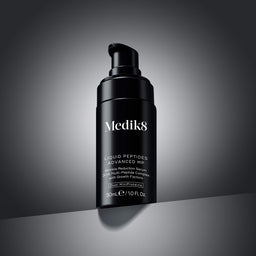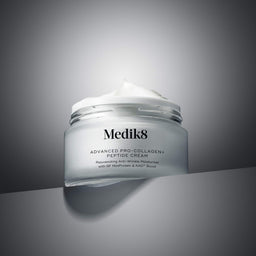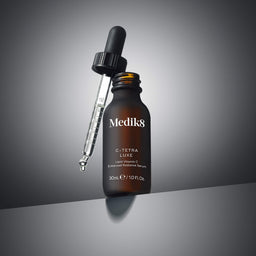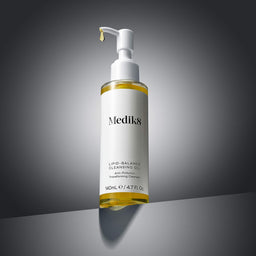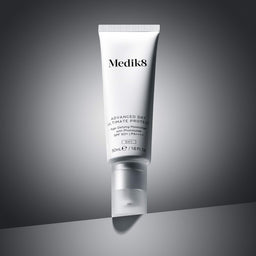
Struggling with blemishes? Delve into Medik8’s expertly-curated breakdown on breakouts and comprehensive guide to blemish-busting ingredients.
What Is Blemish-Prone Skin?
Blemishes occur in many shapes, sizes, and at multiple stages of life - as well as on various areas of the body. A ‘blemish’ can be any kind of spot, dark mark or area of discoloration but the term mostly refers to breakouts and acne. A blemish, in this most common context, is a clogged pore which is left visibly raised, red and often sore.
If you frequently suffer from breakouts, then you are likely to have ‘blemish-prone’ skin. ‘Blemish-prone skin’ can refer to anyone who is susceptible to whiteheads, blackheads, or pustules; from those who get the occasional spot or area of congestion, to those with aggressive acne. Blemish-prone skin is often oily, but can also be dry or subject to other skin concerns such as hyperpigmentation and visible signs of ageing.
Types of Blemishes
There are two major types of blemishes; inflammatory and non-inflammatory.
Non-inflammatory blemishes are usually called comedones and can be either open (blackheads) or closed (whiteheads). Both occur when sebum and dead skin cells combine to clog a pore, but without causing any inflammation.
Inflammatory blemishes can come in many forms, with the most common types being papules and pustules. Papules are small red bumps which may feel tender or sore while pustules, although very similar to papules, have a white tip due to a build-up of pus within them. The most severe form of inflamed blemishes are nodules and cysts which are often large, firm, pus-filled bumps that are especially painful and can lead to scarring if not treated correctly.
How Do Blemishes Form and What Causes Them?
Blemishes are formed when the pores get clogged, and this is caused by one of four things:
- Excess sebum
- Build-up of dead skin cells
- Inflammation
- Accumulation of blemish-causing bacteria (known as C. acnes)
While there is no definitive cause of blemishes and breakouts, the most common factors which trigger the above circumstances include:
- Hormonal changes (i.e during puberty, pregnancy, menopause or changes in hormonal contraceptives)
- Various medication
- Stress
- Environmental factors (such as humid conditions, an impaired barrier function or changes in diet)
Very often, a multitude of these factors result in a breakout.
The Top Ingredients & Products to Banish Blemishes
Medik8’s recommended Clear Complexion Regime:
AM
Press & Clear (can also use PM)
PM
Clarity Peptides (can also use AM)
Bi-Weekly: Natural Clay Mask
As always, we recommend to build your skincare routine around our CSA philosophy to maintain visibly healthy and clear skin:
Vitamin C
A powerful antioxidant, vitamin C has the ability to neutralise free radicals which can oxidise sebum, the main cause of blocked pores.
Recommended product: Daily Radiance Vitamin C
Sunscreen
Exposure to UV rays can cause the formation of free radicals which oxidise sebum to form blemishes. Sun exposure can also cause inflammation and redness which can exacerbate the look and feel of existing blemishes.
Recommended product: Advanced Day Ultimate Protect
Vitamin A (Retinaldehyde)
Vitamin A is able to help normalise cell turnover and therefore reduce the amount of sebum our skin produces. This ultimately helps to minimise blocked pores and the likelihood of blemishes. Retinaldehyde (found in Crystal Retinal) is ideal for blemish-prone skin as it is antibacterial and able to eliminate blemish-causing C. acnes bacteria.
Recommended product: Crystal Retinal
Then add in your blemish-specific actives:
Salicylic Acid
Salicylic acid is a beta hydroxy acid (BHA) which is able to soften and dissolve keratin, a protein that blocks pores by causing dead skin cells to stick together.
Salicylic acid is an oil soluble exfoliating acid, meaning it can penetrate deep into the pores to break down blemish-causing blockages such as dead skin cells and excess sebum. Not only does this help to diminish the look of existing blemishes, but also works to prevent future ones from forming.
Salicylic acid is also able to help minimise inflammation to reduce the appearance of red, sore blemishes. You can find salicylic acid in: Press & Clear, Blemish Control Pads, & Blemish SOS.
Mandelic Acid & Glycolic Acid
Mandelic acid and glycolic acid are both alpha hydroxy acids (AHAs).
Mandelic acid (L-Mandelic acid) works on both the surface of the skin and deep within the pores to slough away dead skin cells which can lead to blemish-causing blockages.
Glycolic acid boasts the smallest particle size of all AHAs and breaks down the bonds between dead skin cells so that they can be easily exfoliated away to reveal visibly fresher, brighter and smoother skin underneath.
You can find mandelic acid in: Clarifying Foam and Surface Radiance Cleanse, while glycolic acid is the hero ingredient of Sleep Glycolic.
Niacinamide
Also known as vitamin B3, Niacinamide is an effective anti-inflammatory.
Ideal for minimising the appearance of blemishes, it helps to reduce the skin’s inflammatory response in order to calm the appearance of breakouts.
Niacinamide is a multi-functional ingredient as it also assists in supporting the skin’s natural barrier as well as blocking the process of melanin formation to help minimise the chances of post-inflammatory hyperpigmentation.
You can find niacinamide in: Clarity Peptides, Daily Refresh Balancing Toner and Pore-Refining Scrub.
Tranexamic Acid
Tranexamic Acid is a more recent, trending active within the skin care category. It helps to soothe blemish-prone skin, visibly brighten the complexion and block the formation of dark spots to promote a more even skin tone overall. It therefore works to improve the look of post-blemish marks.
You can find tranexamic acid as one of the hero ingredients within Press & Clear.
Aloe Vera
Aloe vera is a highly effective ingredient for soothing inflamed, red and irritated skin. As well as hydrating and balancing the skin, aloe vera possesses potent anti-inflammatory properties which help to improve the look of blemish-prone skin, both instantly and over time.
You can find this hero ingredient in Press & Clear’s triple-action formula.
Key Takeaways
- Recognise what type of blemishes you have in order to treat them more effectively
- Be aware of common causes of blemishes
- Establish a skincare regime for both morning and night which incorporates ingredients to maintain healthy, balanced skin as well as specifically targeting blemishes
Remember, a healthy skin barrier is key in helping to minimise future blemishes. Blemish-prone skin is also sensitive skin so avoid attacking your skin with harsh products. Instead, use gentle cleansers and appropriate ingredients for blemish-prone skin.
← Older Post Newer Post →
